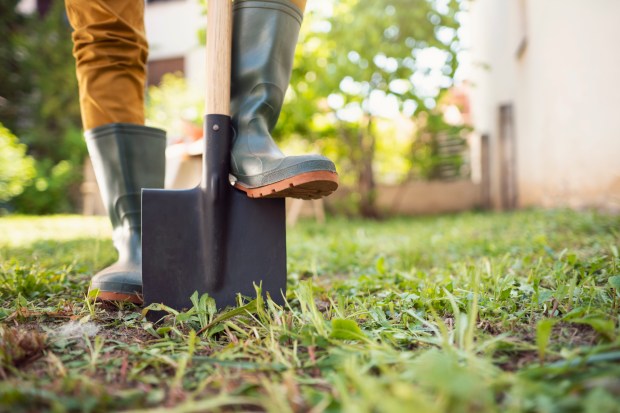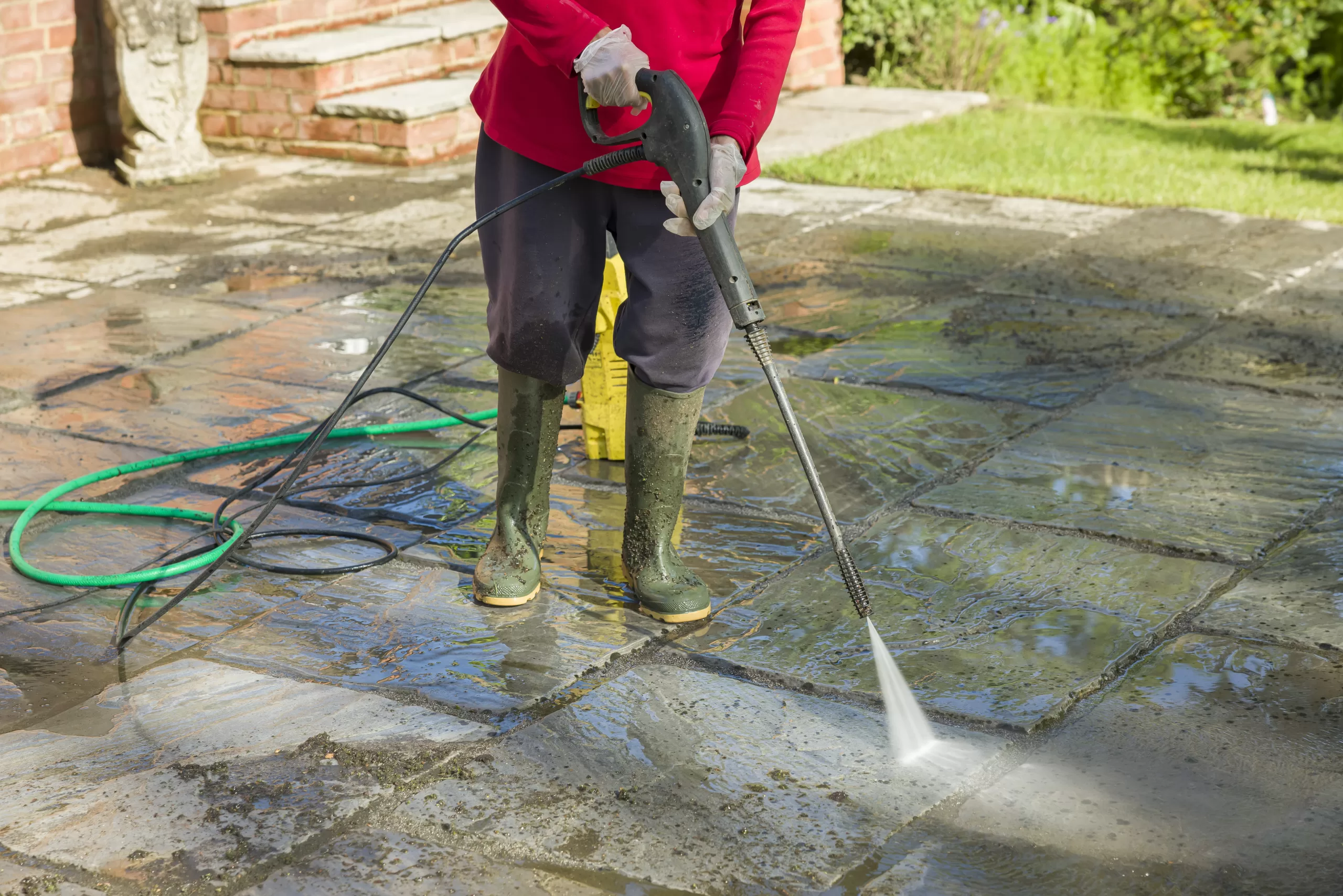And experts recommend beginning with cleaning your patio.
Trevor Knight, technical garden and driveway specialist for Marshalls has shared the do’s and don’ts when it comes to cleaning your patio
He said: “As with any part of your home, your patio will need maintenance and cleaning.
“Keeping on top of this will keep your garden looking sharp all year round.”
DO use the soapy water method
“For the soapy water method, you will need a hard-bristled brush and an eco-friendly cleaning agent,” he explained.
READ MORE GARDENING STORIES
“Opting for an eco-friendly cleaning agent is crucial for protecting waterways and wildlife, ensuring no harsh chemicals are being washed away into natural water courses or borders of the garden, causing damage to delicate trees and plants.
“Mix your chosen cleaning agent with warm water and start from the corners of your patio slabs, working inwards.
“Rinse and repeat until you’re happy with the result.
“When finished, rinse with clean water to ensure any loose dirt or residue has been removed, avoid washing suds and soap into a drainage point that’s a one-part system designed for rainwater only.”
DO use a pressure washer – but with caution
Trevor explained: “For stubborn dirt and build-up, a pressure washer may be the best option for your patio.
“You must take caution when using this method as it can damage your pavers if done incorrectly.
“The pressure washer will need to be connected to your garden hose and will require your chosen cleaning agent.
“If you don’t have detergent then a solution of eco-friendly washing-up liquid and water would suffice.
“Working from the corners in, hold the pressure washed at a 30-degree angle and work your way down the patio.
“Don’t hold the pressure washer too close to the slabs as it may cause permanent damage.
“You should start on a low-pressure setting to reduce the risks of damage.”
He added: “Once you have washed your patio, you will want to check all joints to make sure none of the jointing material has been washed out or loosened.
“If it has, you will want to re-sand or re-point any of the affected joints.
“If you’re considering a new patio, and you’re keen to spend the least amount of time on maintenance, you could consider using porcelain paving as it absorbs little to no moisture.
“This means that any detritus remains on the surface and is very much easier to clean and maintain.”
DON’T use white vinegar
Trevor said: “Despite often being a popular choice for cleaning the patio, vinegar can harm the biodiversity of your garden.
“White vinegar solutions can damage and kill plants – this may be the ideal outcome for those wanting to rid their patio of weeds, however, if this solution were to make its way onto your plants and grass, the result would be less than desirable.
“The use of acidic solutions should be avoided, particularly on calcareous pavers such as those made from limestone.
“Use on these pavers can lead to irreparable damage of the material.”
DON’T use bleach
The expert said: “Similar to vinegar, bleach is harmful to plants and, therefore, can harm your garden’s biodiversity.
“Any bleach solution that runs off of the patio onto grass or plants when cleaning can cause significant harm to these, likely causing them to die.
“Over time, bleach can also lead to discolouration and irreparable damage to paving slabs, particularly those that are man-made such as concrete slabs.”
May gardening jobs

The Sun’s Gardening Editor, Veronica Lorraine, has shared the tasks you need to crack on with in May.
GARDEN growth can go from nought to ninety in May, depending on the weather. The last UK frosts are generally seen at the beginning of the month, so all of a sudden there’s so much more to do and grow.
Plant out dahlia tubers
It’s a joy to finally plant out your dahlia tubers. Remember how big they can get – and space accordingly – anything up to half a metre apart.
It’s a good idea to put your support stakes in now instead of trying to work around them.
And make sure you include lots of well rotted manure or decent compost to feed it and then mulch to keep it moist and suppress weeds. They generally start blooming in July.
Final feed to Spring flowers
You can give a cheeky feed to all your remaining tulips and daffodils.
Although the majority of bulbs aren’t guaranteed to come back year after year any more, as long as you’ve left them to die back naturally there’s a good chance they’ll have stored enough energy to come back again. Tomato feed is fine.
Tie up climbers
Your clematis, honeysuckle and rambling roses should be well on their way by now – try to use plastic free string to tie them back into their support, or tuck them round each other to make sure they don’t sprout off in crazy directions.
Feed the lawn
It’s not too late to give your lawn a good feed.
Whether you use granular or liquid, it can give it a good boost to see it through the harsher summer months.
While mowing, don’t go too low with your cut length yet and never take more than a third off the grass height.
Get creative
It’s also time to get creative with hanging baskets and pots.
Trailing pelargoniums, which a lot of people call geraniums, and Begonias are a good, low cost way of getting lovely returning blooms throughout the summer in your baskets.
And pots can be planted with spring bulbs.
Don’t forget the greenhouse!
Give your greenhouse a good tidy and clean the glass inside and out.
The improved light will help plants grow quicker inside and tidying is good for the soul.
You can just use a household white wine vinegar and water solution – or even neat if you’re feeling spendy – which gives a really good shine.



